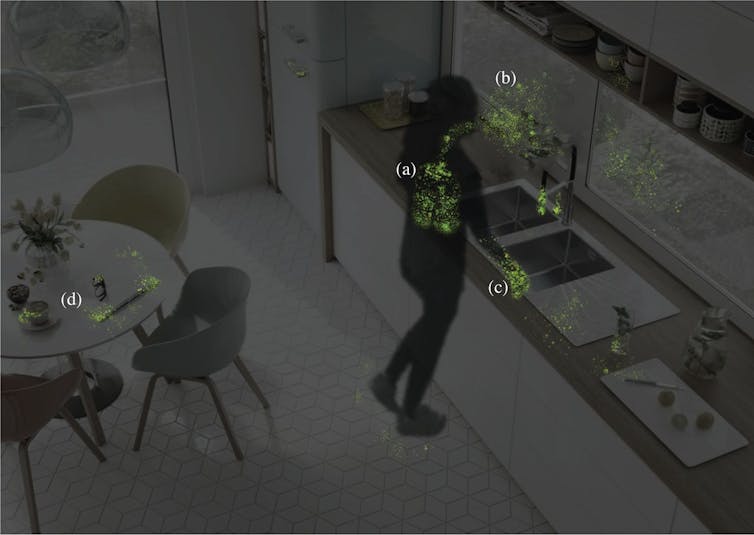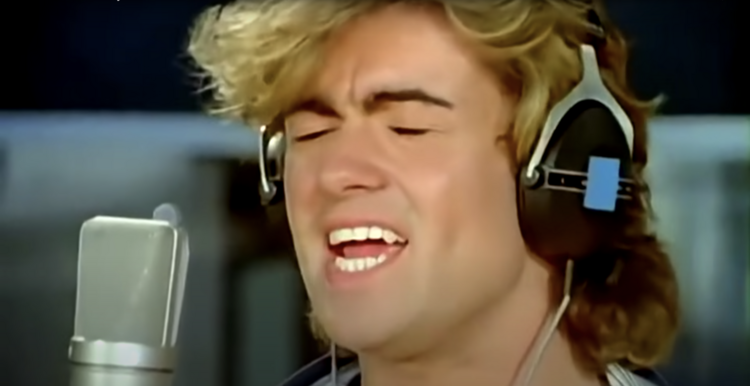
© HENNING BAGGER/Ritzau Scanpix/AFP via Getty Images In this file photo, minks are seen at a farm in Gjol, northern Denmark on October 9, 2020.
In a media Christmas Eve media release, the Ministry of Agriculture, Food and Fisheries said three mink had died at a second farm in the province.
Subsequent testing revealed the presence of SARS-CoV-2, the virus that causes COVID-19 in humans. No workers have tested positive so far.
The farm has been put under quarantine preventing the movement of animal or materials from the property, the ministry said.
The mink were tested after some animals at the farm experienced diarrhea, the ministry said. Twenty-three of the farm's 1,000 animals have died between Dec. 19 and Dec. 23.
COVID-19: hundreds of mink die at Fraser Valley farm
It remains unclear how the mink contracted the virus. The farm is not being identified.
No worrying COVID-19 mutations at B.C. mink farm, say health officials
Health officials said Wednesday that genetic sequencing has found no worrying mutations in samples of COVID-19 taken at the first B.C. farm to have an outbreak of the virus.
At least 17 workers and their contacts and five mink at the farm, which has not been publicly identified, have tested positive for the virus. Another 200 mink died at the site earlier in December.
Video: Fraser Valley mink farm COVID-19 outbreak raises concern about virus mutation
The B.C. Centre for Disease Control said samples of the virus were examined by both its own Public Health Laboratory, and the Canadian Food Inspection Agency's National Centre for Foreign Animal Disease Laboratory in Winnipeg.
"One common mutation was detected in both the animals and the farm workers," said the BCCDC.
Read more: Hundreds of mink dead from COVID-19 on Fraser Valley farm in B.C.
"This mutation is not in the spike protein of the coronavirus and has been reported in mink previously. Neither the mutation nor the outbreak present an increased risk to human health at this time."
The tests also revealed that the workers and the mink were infected with an "identical or nearly identical" strain of the virus, which has been circulating in B.C.
The BCCDC said that indicates the virus spread from people to the mink, not the other way around.
The agency said further human testing was underway, and that more samples would also be collected from mink.
Read more: Containing COVID-19 outbreak to single B.C. mink farm essential, say experts
The outbreak at the farm has been contained, the BCCDC said, adding that public health and the Ministry of Agriculture, Food and Fisheries continue to monitor mink farms.
The outbreak was the first in Canada on a mink farm, but followed multiple outbreaks in Europe and the U.S.
Mutation concerns rise over COVID-19 outbreak at B.C. mink farm
In Denmark, scientists discovered that the virus had been contracted by mink, mutated, then spread back to humans -- raising concerns it could affect the efficacy of a COVID-19 vaccine.
The country subsequently culled 17 million of the animals.
Research has since found the Danish mutations were less worrisome than originally thought, but could potentially affect how well antibody therapies work on the virus, according to Dr. Jan Hajek, a UBC infectious disease specialist.
In a media Christmas Eve media release, the Ministry of Agriculture, Food and Fisheries said three mink had died at a second farm in the province.
Subsequent testing revealed the presence of SARS-CoV-2, the virus that causes COVID-19 in humans. No workers have tested positive so far.
The farm has been put under quarantine preventing the movement of animal or materials from the property, the ministry said.
The mink were tested after some animals at the farm experienced diarrhea, the ministry said. Twenty-three of the farm's 1,000 animals have died between Dec. 19 and Dec. 23.
COVID-19: hundreds of mink die at Fraser Valley farm
It remains unclear how the mink contracted the virus. The farm is not being identified.
No worrying COVID-19 mutations at B.C. mink farm, say health officials
Health officials said Wednesday that genetic sequencing has found no worrying mutations in samples of COVID-19 taken at the first B.C. farm to have an outbreak of the virus.
At least 17 workers and their contacts and five mink at the farm, which has not been publicly identified, have tested positive for the virus. Another 200 mink died at the site earlier in December.
Video: Fraser Valley mink farm COVID-19 outbreak raises concern about virus mutation
The B.C. Centre for Disease Control said samples of the virus were examined by both its own Public Health Laboratory, and the Canadian Food Inspection Agency's National Centre for Foreign Animal Disease Laboratory in Winnipeg.
"One common mutation was detected in both the animals and the farm workers," said the BCCDC.
Read more: Hundreds of mink dead from COVID-19 on Fraser Valley farm in B.C.
"This mutation is not in the spike protein of the coronavirus and has been reported in mink previously. Neither the mutation nor the outbreak present an increased risk to human health at this time."
The tests also revealed that the workers and the mink were infected with an "identical or nearly identical" strain of the virus, which has been circulating in B.C.
The BCCDC said that indicates the virus spread from people to the mink, not the other way around.
The agency said further human testing was underway, and that more samples would also be collected from mink.
Read more: Containing COVID-19 outbreak to single B.C. mink farm essential, say experts
The outbreak at the farm has been contained, the BCCDC said, adding that public health and the Ministry of Agriculture, Food and Fisheries continue to monitor mink farms.
The outbreak was the first in Canada on a mink farm, but followed multiple outbreaks in Europe and the U.S.
Mutation concerns rise over COVID-19 outbreak at B.C. mink farm
In Denmark, scientists discovered that the virus had been contracted by mink, mutated, then spread back to humans -- raising concerns it could affect the efficacy of a COVID-19 vaccine.
The country subsequently culled 17 million of the animals.
Research has since found the Danish mutations were less worrisome than originally thought, but could potentially affect how well antibody therapies work on the virus, according to Dr. Jan Hajek, a UBC infectious disease specialist.


 The Weather Network
The Weather Network © JAXA JAXA
© JAXA JAXA







